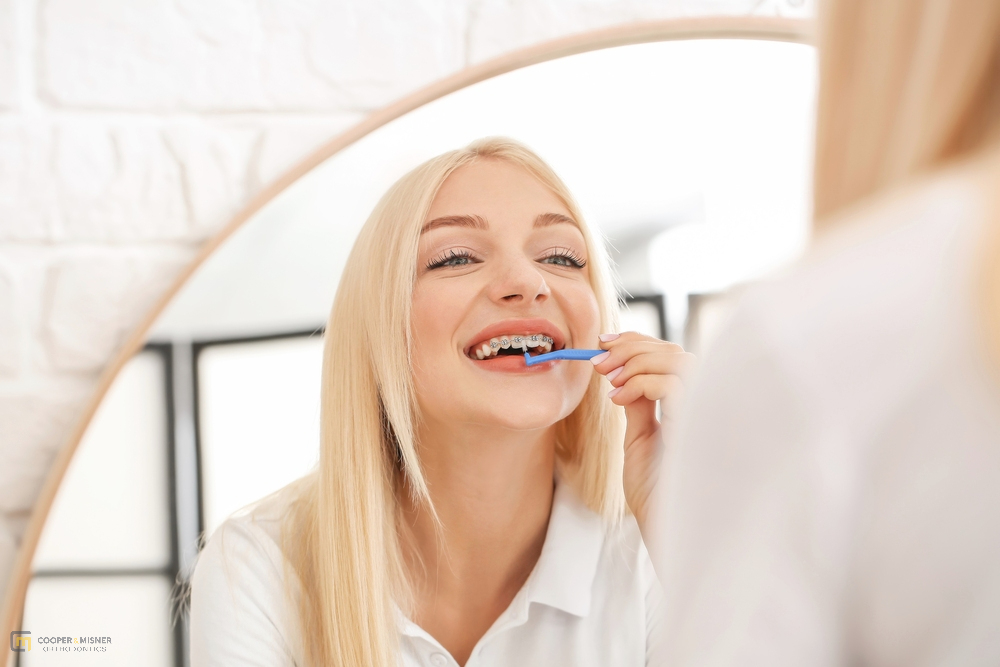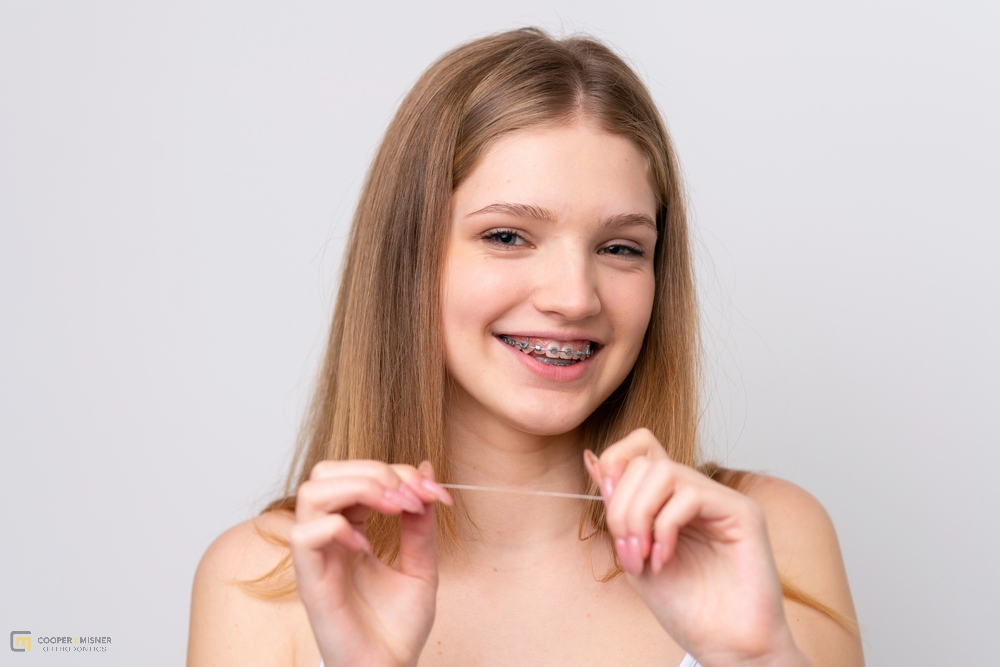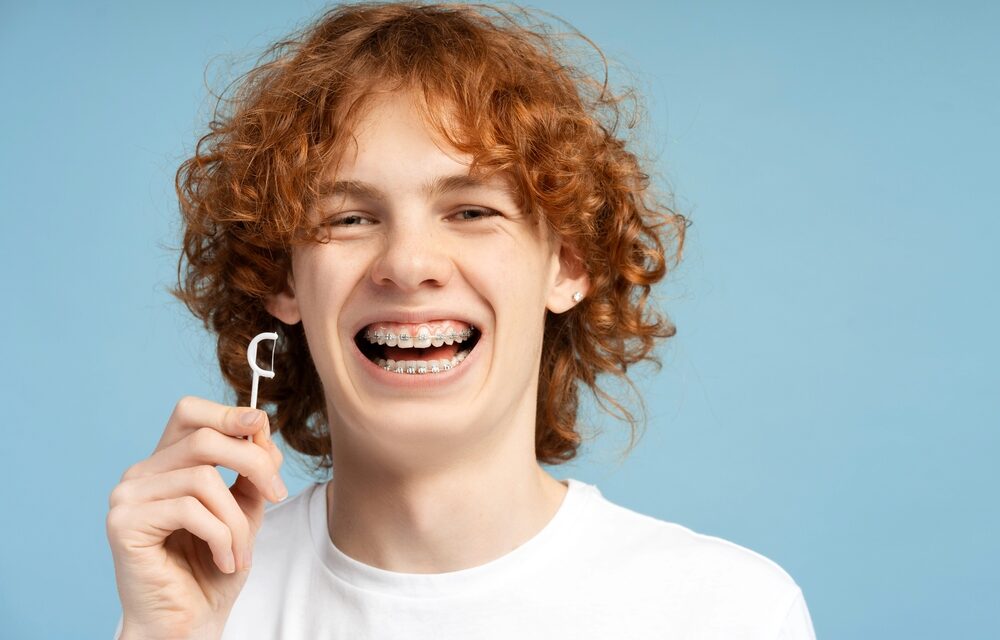Trying to figure out how to floss with braces in Tulsa, OK? Flossing with braces can feel tricky at first, but it’s one of the most important steps in keeping your smile healthy during orthodontic treatment. This guide covers everything you need to know, from why flossing matters and the best tools to make it easier, to step-by-step instructions and solutions for common challenges.

Why Flossing with Braces Is Key
Braces are designed to straighten your teeth, but they create small spaces where food and plaque can hide. These hard-to-reach spots can lead to tartar buildup, tooth decay, or gum disease if not cleaned daily. Brushing can’t reach all the teeth surfaces around brackets and wires, so flossing is essential. Flossing keeps your oral hygiene routine effective and helps ensure your orthodontic treatment stays on track.
Tools to Simplify Flossing with Braces
Using the right flossing products makes cleaning your braces easier and faster. Here are some of the best tools for the job:
Floss Threaders
A floss threader acts like a small needle that helps you guide floss under the wires of your braces. These tools are simple to use and let you clean between teeth without damaging your brackets. As noted by Dr. Matthew Miller, a professional orthodontist in Rocky Point, NY, floss threaders are especially useful for first-time users who might otherwise find the process of flossing with braces overwhelming.
Water Flossers
A water flosser sprays water to clean around brackets and wires. It works well for removing plaque and food particles, especially in hard-to-reach areas. Water flossers are great for those with sensitive gums or who want a faster alternative to traditional flossing.
Superfloss
Superfloss comes pre-cut with stiff tips for threading under wires along with soft, spongy sections that clean plaque near the gumline. It’s an excellent option when you need something quick and easy to use during your braces hygiene routine.
Interdental Brushes (Proxabrushes)
Interdental brushes, also called proxabrushes, are small brushes designed to fit between teeth and brackets. These brushes are great for removing plaque buildup from spots that traditional floss may not easily reach.
Floss Picks
Floss picks come with a handle and a pre-threaded floss strand. They’re convenient and fast, making them perfect for patients on the go who might find string floss cumbersome.
Where to Find Flossing Tools
You can find flossing tools like threaders, water flossers, superfloss, proxabrushes, and floss picks at most drugstores, online retailers, or specialty dental care stores. Orthodontic practices such as Cooper & Misner Orthodontics may also provide flossing kits to help you build your oral care routine.
Step-by-Step Flossing Guide for Braces
Flossing takes some practice, but it becomes easier once you build the right habits. Follow these simple steps:
Step 1: Get Your Floss Ready
Cut about 18 inches of floss. If you’re using traditional floss, guide it under the wires with a floss threader. Hold the floss tight between your fingers to keep it steady. Move slowly to avoid pulling on your braces or hurting your gums.
Step 2: Floss Around Each Tooth
Curve the floss into a “C” shape around one tooth. Gently move it up and down along the tooth and under the gumline to clean away food debris and plaque. Be careful not to snap the floss or use rough motions, as this could hurt your gums or damage the wires.
Step 3: Try a Water Flosser
For an extra thorough clean, use a water flosser to remove plaque and food particles stuck in tight spots around brackets and back teeth. Adjust the water pressure to what feels comfortable for your gums.
Step 4: Finish with Brushing
Once you’ve flossed, use a soft-bristle toothbrush to clean all surfaces around your braces. Use fluoride toothpaste and brush carefully around the brackets and wires. Finish with a fluoride mouthwash to help strengthen your teeth and fight plaque.
Flossing Methods Based on Braces Type
Different types of braces may require slight adjustments in your flossing technique:
- Metal Braces: Take extra care to thread the floss around each bracket and under wires.
- Clear Braces: Be gentle to avoid damaging the clear brackets, which are more delicate than metal.
- Lingual Braces: These are placed behind the teeth, so a proxabrush or water flosser can make cleaning much easier.
- Self-Ligating Braces: These have fewer components, but you should still clean thoroughly under and around the wires.
Common Flossing Challenges and Solutions
Problem: Sensitive or Sore Gums
Solution: It’s normal for your gums to feel a little sore when you start flossing, especially if you’re not used to it. Rinse with warm saltwater to ease discomfort. Regular flossing will strengthen your gums over time.
Problem: Hard-to-Reach Areas
Solution: Investing in tools like a water flosser, proxabrush, or superfloss makes it easier to clean tighter spaces, such as the back teeth near molars.
Problem: Time-Consuming Flossing
Solution: If flossing with braces takes too long, try floss picks or a water flosser. These tools help speed up the process while keeping your braces and teeth clean.
Caring for Your Teeth After Braces
When your braces come off, keeping up good habits is vital to maintaining your new smile. Follow these tips:
- Clean Your Retainer: Wash and brush your retainer daily to prevent bacteria and plaque buildup.
- Floss Daily: Continue flossing every day to get rid of plaque and prevent tartar.
- Brush Thoroughly: Brush twice a day with fluoride toothpaste for at least two minutes to remove debris and strengthen tooth enamel.

Tips from Cooper & Misner Orthodontics
At Cooper & Misner Orthodontics, we believe excellent oral hygiene habits are essential to your orthodontic care. Flossing daily helps you avoid long-term dental issues like cavities or gum disease. Here’s how we support our patients:
- Personalized Flossing Instructions: We teach you how to use the right techniques based on your braces type.
- Helpful Tools: We provide recommendations for floss threaders, water flossers, and proxabrushes to simplify your cleaning routine.
- Ongoing Care: Our team offers guidance to reduce plaque buildup, protect your gums, and improve your daily hygiene.
Make Flossing with Braces Easy
Flossing with braces can seem tough at first, but the right techniques and tools make it much easier. If you have questions about your routine, Cooper & Misner Orthodontics in Tulsa, OK, is here to help. Contact us for personalized advice, flossing demonstrations, or to create an oral hygiene routine that works for you.
About The Authors
Dr. Kenner Misner – Orthodontist in Tulsa, OK
Dr. Matthew Miller – Orthodontist in Rocky Point, NY
Frequently Asked Questions
How many times a day should I floss with braces?
When you have braces, try to floss at least once a day; bedtime is best. If you can manage twice a day, that’s even better. It may take a little longer with the wires and brackets, but it’s worth it. Be patient and gentle so you don’t hurt your gums or damage your braces. Using a floss threader, water flosser, or special orthodontic floss can make it easier. Keeping up with daily flossing helps your teeth stay clean and your gums stay healthy while your braces do their job.
What to do if there is no floss?
You can still clean between your teeth using some quick alternatives. Try a clean thread, a thin piece of cloth, or an interdental brush if you have one. You can also gently use a toothpick to remove food stuck between your teeth, just be careful not to poke your gums. These are only short-term fixes, though. It’s best to get real dental floss as soon as you can to keep your mouth healthy.
Why won’t my floss go between my back teeth?
It can be tricky when the floss won’t slide between your back teeth. This might happen if your teeth are very close together or if there’s plaque or tartar buildup blocking the way. Try using waxed floss; it’s smoother and easier to slide. You can also use a floss pick or water flosser to reach tight spaces. If it still doesn’t work, your dentist can check for buildup and give your teeth a proper cleaning.


